 W
WAllegory to the Element Earth is a painting by the Venetian Renaissance artist Leandro Bassano of about 1580, now in The Walters Art Museum, Baltimore.
 W
WThe Archdukes Albert and Isabella Visiting a Collector's Cabinet is a 17th-century Flemish collaborative painting, now regarded as by Jan Brueghel the Elder and Hieronymus Francken II. It is part of the collection of The Walters Art Museum in Baltimore, Maryland.
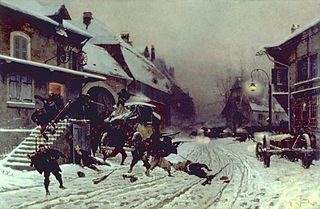 W
WThe Attack at Dawn by Alphonse de Neuville is a painting by French painter Alphonse de Neuville, from 1877. The painting depicts a French town under siege by Prussian troops during the Franco-Prussian War.
 W
WBefore the Race (1882–84) is a painting by Impressionist painter, Edgar Degas, who began painting scenes with horses in the 1860s.
 W
WThe Café-Concert is an 1879 painting by the French painter Édouard Manet, who often captured café scenes depicting social life at the end of the nineteenth century similar to those depicted in this painting.
 W
WThe Catskills by Asher Brown Durand, an American engraver, portraitist, and landscape artist, was commissioned by William Thompson Walters in 1858.
 W
WThe Death of Caesar is an 1867 painting by the French artist Jean-Léon Gérôme. It depicts the moment after the assassination of Julius Caesar, when the jubilant conspirators are walking away from Caesar's dead body at the Theatre of Pompey, on the Ides of March, 44 BC. The painting is kept at the Walters Art Museum in Baltimore, Maryland.Characteristically, Gérôme has depicted not the incident itself, but its immediate aftermath. The illusion of reality that Gérôme imparted to his paintings with his smooth, polished technique led one critic to comment, "If photography had existed in Caesar's day, one could believe that the picture was painted from a photograph taken on the spot at the very moment of the catastrophe."
 W
WThe Duel After the Masquerade is a painting by the French artist Jean-Léon Gérôme, of which multiple copies exist. The original, Suite d'un bal masqué, first shown in 1857, is in the Musée Condé in Chantilly, France.
 W
WThe Guard Room is a 1642 oil on panel painting by David Teniers the Younger, now in the Hermitage Museum in St Petersburg. It is signed and dated "David Teniers F. 1642" at the bottom left. Several unsigned but probably autograph variants also survive, such as at the Catherine Palace near St Petersburg and the Walters Art Museum in Baltimore, USA. An early copy by an unknown artist after the Hermitage work is now in the National Museum of Sweden.
 W
WHoly Family with the Infant Saint John the Baptist is an unfinished c.1521 oil on panel painting by Rosso Fiorentino, produced early in his stay in Volterra. The Christ Child's pose is influenced by that in Andrea del Sarto's Madonna of the Harpies (1517). The work is now in the Walters Art Museum in Baltimore.
 W
WItalian Brigands Surprised by Papal Troops is an 1831 painting produced in Rome by Horace Vernet. It was recorded in the "John T. Johnston Collection", which was sold by its owner to William T Walters of Baltimore on 20 December 1876 for $10,110, the most expensive work in Johnston's collection. In 1894 it passed to Henry Walters and in 1931 one of his heirs left it to its current owner, the Walters Art Museum, Baltimore.
 W
WLost Illusions is a painting by Charles Gleyre and his student Leon Dussart, commissioned by William Thompson Walters in 1865.
 W
WMadonna and Child is a c.1459-1460 painting by Giorgio Schiavone, produced during his time in Francesco Squarcione's studio in Padua. It is signed on a cartouche on the fictive marble balustrade at the base "HOC PINSIT GEORGIUS DALMATICUS DISCIPULUS SQUARCIONIS". Two angel musicians also sit on the balustrade.
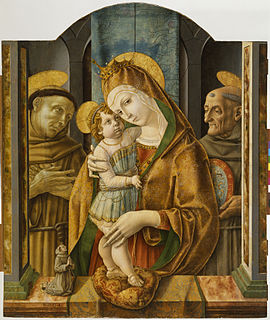 W
WMadonna and Child with Saints is a c.1490 oil on panel painting by Carlo Crivelli. It shows the Madonna and child between Francis of Assisi and Bernardino of Siena, with a tiny figure of the painting's donor kneeling on the balustrade in front of the Madonna. It is recorded in Marcello Massarenti's collection in Rima before being acquired by an American owner or dealer in 1910. It is now in the Walters Art Museum in Baltimore.
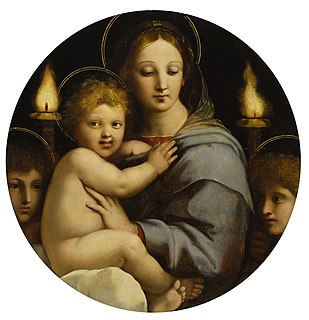 W
WThe Madonna of the Candelabra is a Madonna painting by the Italian Renaissance artist Raphael, dating to about 1513 and is in the collection of the Walters Art Museum in Baltimore.
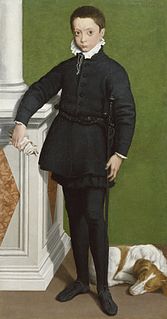 W
WPortrait of Massimiliano II Stampa is a c.1558 oil on canvas painting by Sofonisba Anguissola, now in the Walters Art Museum, Baltimore, USA. It was previously misattributed to Giovan Battista Moroni, possibly due to stylistic similarities with Moroni's The Knight in Black.
 W
WOdalisque with Slave is an 1839 painting by Jean-Auguste-Dominique Ingres commissioned by Charles Marcotte. Executed in oil on canvas, it depicts a nude odalisque, a musician, and a eunuch in a harem interior. The painting is in the Fogg Art Museum in Cambridge, Massachusetts. It is a classic piece of Orientalism in French painting.
 W
WThe Potato Harvest is an 1855 painting by the French artist Jean-François Millet.
 W
WSaint Jerome in the Desert is a 149.8 by 106 centimetres oil on panel painting by Pinturicchio, painted c.1475-1480 and showing Jerome. It is one of the earliest dated paintings attributed to the artist and was produced just after his contributions to the Miracles of St Bernardino series (1473).
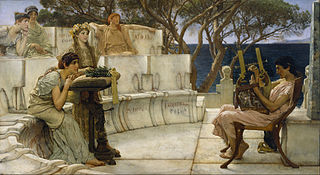 W
WSappho and Alcaeus is an 1881 oil painting by Lawrence Alma-Tadema. It is held by the Walters Art Museum in Baltimore.
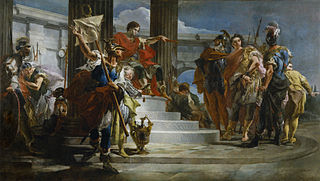 W
WScipio Africanus Freeing Massiva is a painting depicting a scene from ancient Roman history by the Venetian artist Giovanni Battista Tiepolo, painted between 1719 and 1721. The painting depicts the Roman general Scipio Africanus after the 209 BCE Battle of Baecula in present-day Spain where he defeated the Carthaginians, capturing their Iberian and North African allies. The painting details the moment in which one of the captured Africans is brought before Scipio, who recognises him to be Massiva, the nephew of a chieftain of Eastern Numidia, Massinissa. Scipio reportedly frees Massiva, sending him home to his uncle laden with gifts and so winning Massinissa's loyalty for Rome.
 W
WSpringtime or The Reader is an 1872 painting by the French Impressionist painter Claude Monet. It depicts his first wife, Camille Doncieux, seated reading beneath a canopy of lilacs. The painting is presently held by the Walters Art Museum.
 W
WThe Terrace at Saint-Germain, Spring is a painting by English Impressionist painter, Alfred Sisley, completed in 1875. It is in The Walters Art Museum collection.
 W
WThe Source of the Loue is the name of several mid-19th century paintings by French artist Gustav Courbet. Done in oil on canvas, the paintings depict the Loue river in eastern France.
 W
WThe Tulip Folly is an 1882 painting by French artist Jean-Léon Gérôme. Done in oil on canvas, the painting demonstrates a conceptual scene from the historical "Tulip mania" of 17th century Holland. The work is in the collection of the Walters Museum of Art.